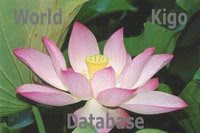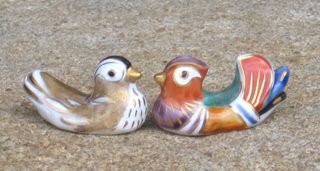[ . BACK to DARUMA MUSEUM TOP . ]
:::::::::::::::::::::::::::::::::::::::::::::::::::::::::::::::::::::::::::::::::::::::::::::::::::::
Natto ... Fermented Beans 納豆

 From Mito : Daruma Natto
From Mito : Daruma Natto
 And another packing
And another packing
 © www.darumanatto.jp / だるま食品株式会社
© www.darumanatto.jp / だるま食品株式会社

The famous
Mito Komon was very fond of Natto !
. Mito Kōmon 水戸黄門 Tokugawa Mitsukuni 徳川 光圀 .
:::::::::::::::::::::::::::::::::::::::::::::::::::::::::::::::::::::::::::::::::::::::::::::::::::
Nattō, Nattoo, Nattoh, Nattou
is a traditional Japanese food made from fermented soybeans, popular especially at breakfast. A rich source of protein, nattō and the soybean paste miso formed a vital source of nutrition in feudal Japan. For some, nattō can be an acquired taste due to its powerful smell, strong flavor, and sticky consistency. In Japan nattō is most popular in the eastern regions including Kantō and Tohoku.
History
The materials and tools needed to produce nattō (soybeans and straw) were commonly available in Japan since ancient times, so the discovery could have happened as early as in the Jōmon period. It may also be possible that the product was discovered independently by numerous people at different times. The sources differ about the earliest origin of nattō. One source puts the first use of nattō in the Jōmon period between 10,000 and 300 BC. According to other sources the product may also have originated in China during the Zhou Dynasty (1134 - 246 BC).
Another story is that Yoshiie Minamoto was on a battle campaign in northeastern Japan between 1056 and 1063 and another campaign between 1086 and 1088 when one day in 1083 they were attacked while boiling soybeans for their horses. They hurriedly packed up the beans, and did not open the straw bags until a few days later, at which time the beans had fermented. The soldiers ate it anyway, and liked the taste, so they offered some to Yoshiie, who also liked the taste.
One significant change in the production of nattō happened in the Taisho period (1912 - 1926), when researchers discovered a way to produce a nattō starter culture containing Bacillus natto without the need for straw. This greatly simplified the production process and enabled more consistent results.
It is often said in Japan that nattō is good for health, and these claims can be backed by medical research.
Read much more here ! © WIKIPEDIA
nattokinase ナットキナーゼ enzyme of natto
good for your health, especially the joints of the knees when getting older.
People in Mito have much less knee problems !!
:::::::::::::::::::::::::::::::::::::::::::::::::::::::::::::::::::::::::::::::::::::::::::::::::::
We eat natto almost every day!
There are quite a few brands with Daruma lately, mostly with the slogan:
nebarizuyoi, be sticky like natto!
nebarikatsu, be sticky and win !
 Gookaku Daruma 「合格だるま」
Gookaku Daruma 「合格だるま」 from Takano Foods
To Pass the Examinations !

:::::::::::::::::::::::::::::::::::::::::::::::::::::::::::::::::::::::::::::::::::::::::::::::::::::
With Daruma from Shirakawa
福島・白河の だるま納豆
 . . . CLICK here for Photos !
. . . CLICK here for Photos !
:::::::::::::::::::::::::::::::::::::::::::::::::::::::::::::::::::::::::::::::::::::::::::::::::::::
A brand from Hokkaido,
Hakodate Daruma Natto
函館だるま 経木納豆
 . http://www.rakuten.co.jp/darumahonpo/
. http://www.rakuten.co.jp/darumahonpo/
:::::::::::::::::::::::::::::::::::::::::::::::::::::::::::::::::::::::::::::::::::::::::::::::::::
Kokeshi Natto 納豆こけし Wooden Dolls
 source : zenmaitarow
source : zenmaitarow

黒石こけし納豆
From Kuroishi town
:::::::::::::::::::::::::::::::::::::::::::::::::::::::::::::::::::::::::::::::::::::::::::::::::::
Natto Dishes 納豆料理
nebari donburi ねばり丼 sticky food on rice

with okura,
tororo grated mountain tubers,
ikura salmon roe,
nameko mushrooms, sticky konbu seaweed and on top of it Natto with an egg of a quail.
karaage nattoo, kara age nattoo 唐揚納豆 deep fried natto
nattoo chaahan 納豆チャーハン fried rice with natto
nattoojiru, nattoo jiru 納豆汁 miso soup with natto
nattoo karee 納豆カレー curry with natto
nattoo omuretsu 納豆オムレツ omelette with natto
nattoo tenpura 納豆天ぷら tenpura from natto
. . . CLICK here for Photos !
nattoo tenpura soba 納豆天ぷらそば
buckwheat noodles with natto tenpura
:::::::::::::::::::::::::::::::::::::::::::::::::::::::::::::::::::::::::::::::::::::::::::::::::::::
. nattoobachi 納豆鉢 bowl to stir natto .

It has a handle to hold it firm, a round bottom to stir the beans, is big enough to add some topping and has a sprout to pour the mix on a bowl of rice for breakfast.
They are made by various potters, especially in Kasama.
:::::::::::::::::::::::::::::::::::::::::::::::::::::::::::::::::::::::::::::::::::::::::::::::::::::
quote
Natto from Mito
I had stopped by natto restaurant Tenmasa for a
nebari donburi (sticky rice bowl) lunch. This item, which is definitely in the running for the title of the world's slimiest dish, consists of
toro imo (grated mountain tuber), okra, salmon roe,
nameko mushrooms, a type of kombu (kelp) and natto garnished with a raw quail's egg placed atop a large bowl of rice.
Many foreigners here can never get used to the stuff. "It's fetid, slimy and visually repellent," a lady friend from the U.K. once exclaimed to me. In its defense, I would just add that natto is an inexpensive, healthy food that lends itself to a variety of preparations. For about ¥80 for a 50-gram pack, natto boasts around eight grams of protein and only 100 or so calories, making it far cheaper and healthier than animal protein. Incidence of stroke is said to be statistically lower in parts of Japan with high natto consumption.
Before heading for home, I stopped by the
Tengu Natto factory 水戸天狗納豆
five minutes from Mito Station. I also toured the small museum upstairs, which, along with panels introducing the company's history, features an exhibit demonstrating traditional natto-production methods.
source : japantimes.co.jp
納豆展示館 Natto Tenjikan Museum

水戸天狗納豆(株)笹沼五郎商店
TEL:029-225-2121

nattongu なっトング
tongue to grab natto,
like an open spoon to eat easily.
:::::::::::::::::::::::::::::::::::::::::::::::::::::::::::::::::::::::::::::::::::::::::::::::::::::
natto - kigo for winter
. Matsuo Basho 松尾芭蕉 - Archives of the WKD .
 納豆切る音しばし待て鉢叩き
nattoo kiru oto shibashi mate hachi tataki
wait awhile
納豆切る音しばし待て鉢叩き
nattoo kiru oto shibashi mate hachi tataki
wait awhile
cut the soybeans to the sound
of monks beating bowls
Tr. Tr. Reichhold
hold for a moment
the sound of slicing soybeans
bowl beating
Tr. Barnhill
According to Jane Reichhold,
"'Nattoo' is a traditional food made from fermented soybeans. Finely chopped onion leaves, mustard greens, and seaweed were often added to the soybeans."
the sound of chopping
fermented soy beans stops for a while -
Hachitataki ritual
Tr. Gabi Greve
Natto is part of the daily food in Buddhist temples and monasteries. Chopped natto can be added to a soup. So the meaning is
"Since it's during a ritual of hachi tataki (beating a bowl/bowls),
please wait for cutting natto for a while."
Thanks to
- : Yoshiko McFarland
Hachi Tataki 鉢叩 鉢敲, 鉢扣
First yearly Memorial Service for Kuuya Shoonin
. Kuya Shonin, (903-72) 空也上人 .
kigo for the New Year
With another haiku by Basho.
:::::::::::::::::::::::::::::::::::::::::::::::::::::::::::::::::::::::::::::::::::::::::::::::::::::
 source : shigoto-creator.com - いずみ朔庵
nattoo uri 納豆売り natto vendor in Edo
source : shigoto-creator.com - いずみ朔庵
nattoo uri 納豆売り natto vendor in Edo
He was the earliest in town every morning,
waking everybody with his loud shouting.
納豆のあとからばつたばたとくる
nattoo no ato kara batta bata to kuru
after the natto vendor
they come out making noise (on the road)
pitter patter pitter patter
Natto was sold only in winter on the streets of the early Edo period. But during the end of the Edo period it was also sold in summer.
納豆をたたきあきると春が来る
nattoo o tataki-akiru to haru ga kuru
just when I get fed up
with chopping natto beans
spring is coming
 source : rim27.exblog.jp
source : rim27.exblog.jp
They hacked and chopped the natto beans into small pieces and sold them like that (
tataki nattoo 叩き納豆) for people to prepare a fast soup for breakfast (nattoo jiru 納豆汁).
. Doing Business in Edo 江戸の商売 Food vendors .
:::::::::::::::::::::::::::::::::::::::::::::::::::::::::::::::::::::::::::::::::::::::::::::::::::::
 natto Yokai Monsters 納豆妖怪いろいろ
natto Yokai Monsters 納豆妖怪いろいろ
and more food yokai monsters
- reference : japaaan.com/archives -
:::::::::::::::::::::::::::::::::::::::::::::::::::::::::::::::::::::::::::::::::::::::::::::::::::::
More FOOD with Daruma !
WASHOKU : Dishes from Ibaraki prefecture
WASHOKU ... Japanese Food SAIJIKI
[ . BACK to DARUMA MUSEUM TOP . ]
[ . BACK to WORLDKIGO . TOP . ]
:::::::::::::::::::::::::::::::::::::::::::::::::::::::::::::::::::::::::::::::::::::::::::::::::::::






























































